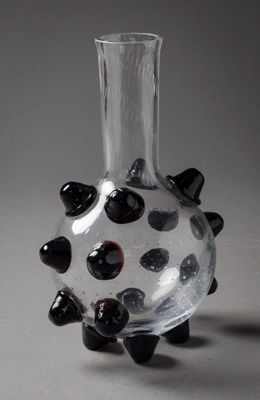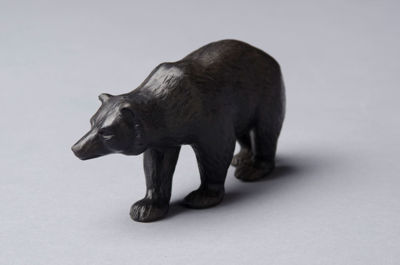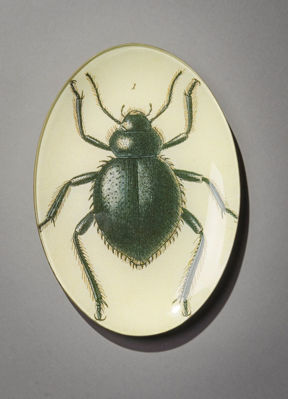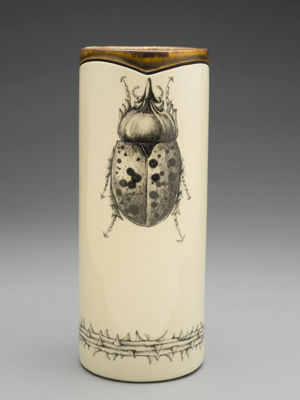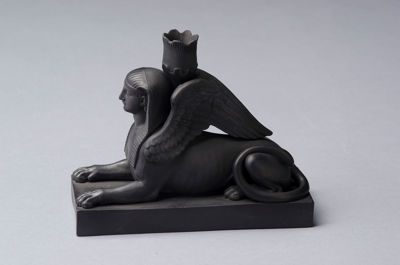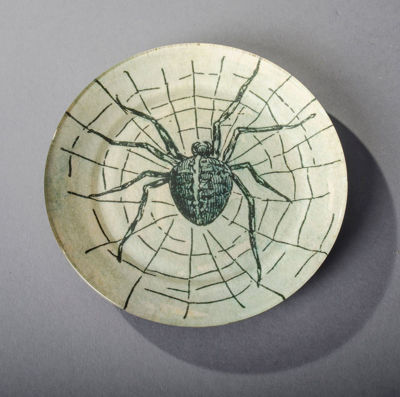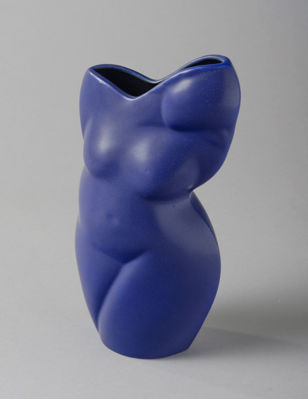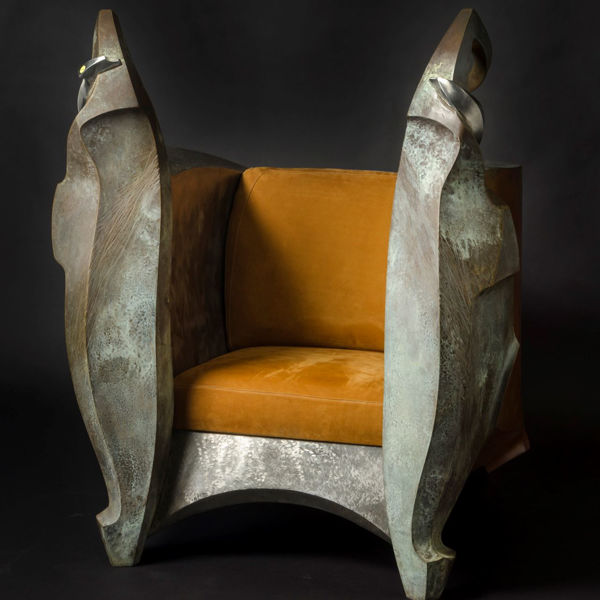Decorative and Design
Title: Bear in Black Basalt
Bear from the celebrated English ceramic firm, modeled by Ernest Light and completed in black basalt with distinctive glass eyes in the early 20th century. Josiah Wedgwood introduced into production a black stoneware body in 1768. The first trials for Wedgwood's new black body had begun by July 1766, even before the move to Etruria. By September 1767 his experiments were at an advanced stage, ready for production, and less than twelve months later black basalt wares were on the market. He called it ‘Black Basaltes'; we know it as black basalt. Made from reddish-brown clay which burned black in firing, this ceramic body was superior in its appearance to the local 'Egyptian Black' wares produced in the area prior to that date.
Title: Beek Bowl
Gouda is a style of Dutch pottery named after the city of Gouda. Gouda pottery gained worldwide prominence in the early 20th century and remains highly desirable to collectors today. Gouda pottery is diverse and visually distinctive in appearance, typically illustrated with colourful and highly decorated Art Nouveau or Art Deco designs. Six pieces: Two Nova claret jugs (1925), Dorian planter (1925) and low bowl (1923), and Indus vase and lantern (c.1930)
Title: Bisque Bust of Elegant Woman
Bisque Bust of an Elegant Woman, France, 19th century, modeled wearing a flower-adorned hat, mounted atop a waisted circular socle with square plinth
Title: Black Basalt Bust of Locke
Wedgwood & Bentley Black Basalt Bust of Locke, England, c. 1780, modeled with a stovepipe back and mounted atop a waisted circular socle, impressed title and mark Library bust of the philosopher, leading member of the Enlightenment movement, and “father of liberalism” John Locke — completed by Wedgwood & Bentley in Wedgwood Black Basalt stoneware circa 1780. The bust, mounted atop a waisted circular socle, faces downwards so as to be placed upon a high pedestal.
Title: Black Basalt Sphinx Candlestick
Pair of Wedgwood Black Basalt Sphinx-form Candlesticks, England, early 19th century, each with a scalloped-edge candle nozzle mounted atop the back of the seated figure set on a rectangular base, impressed mark Early 19th century sphinx-form candlestick pair, completed in the signature Wedgwood black basalt. Each of the seated figures sits atop a plain rectangular base, the scalloped candlestick chamber resting just behind the head and between the wings to create a balanced and tapered silhouette. This is one of many examples of Wedgwood’s indulgence in recreating classical or historical examples of ceramic and sculpture, and through the periods of the 18th and 19th century the reoccurring sphinx could interchangeably be Greek or Egyptian in origin — or even both, as often the differing cultures were indistinguishable by scholars & collectors of the time.
Title: Black Basalt Sphinx Candlestick
Pair of Wedgwood Black Basalt Sphinx-form Candlesticks, England, early 19th century, each with a scalloped-edge candle nozzle mounted atop the back of the seated figure set on a rectangular base, impressed mark Early 19th century sphinx-form candlestick pair, completed in the signature Wedgwood black basalt. Each of the seated figures sits atop a plain rectangular base, the scalloped candlestick chamber resting just behind the head and between the wings to create a balanced and tapered silhouette. This is one of many examples of Wedgwood’s indulgence in recreating classical or historical examples of ceramic and sculpture, and through the periods of the 18th and 19th century the reoccurring sphinx could interchangeably be Greek or Egyptian in origin — or even both, as often the differing cultures were indistinguishable by scholars & collectors of the time.

